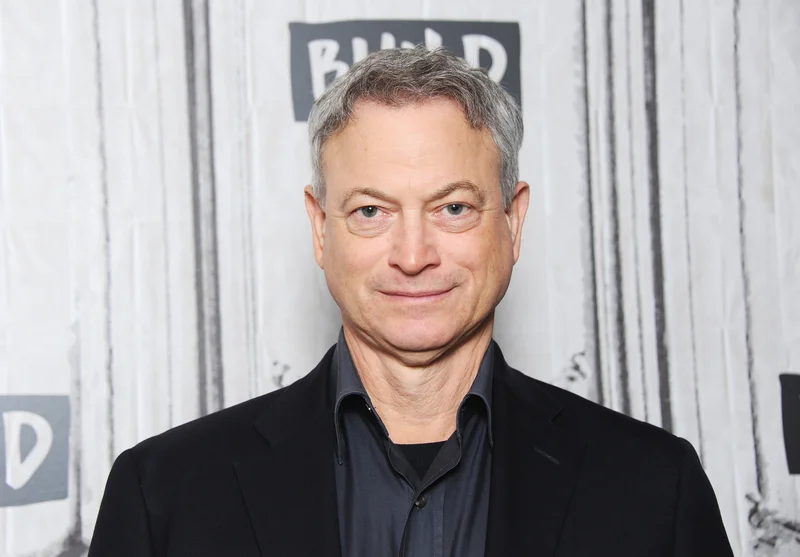Article Directory
The public narrative surrounding actor Gary Sinise is remarkably consistent. He is widely perceived as a patriot, a philanthropist, and a tireless advocate for military veterans and first responders. This perception is built on decades of work, from USO tours to the establishment of his eponymous foundation. But looking past the laudable headlines and the genuine emotional resonance of his work reveals something more interesting: a highly optimized, almost clinical model of philanthropic efficiency.
Most celebrity charities operate on a simple axis of awareness and fundraising. Sinise’s operation is different. It functions less like a traditional non-profit and more like a vertically integrated special projects firm, one that leverages a unique, unquantifiable asset—his public persona, crystallized in the role of Lieutenant Dan Taylor—to deliver bespoke, high-capital products. The speeches, the awards, the public appearances—they aren't just goodwill tours. They are strategic reinforcements of a brand that powers a very specific, and effective, philanthropic machine.
The Brand as Core Asset
To understand the model, one has to first quantify the primary asset. In his May 2025 Graduates Day address at Vanderbilt University, Sinise framed his journey as a pivot "from self to service" following the September 11th attacks. This is the official narrative, and it’s a powerful one. It provides a clear, relatable origin story that resonates with a post-9/11 American psyche. But the groundwork was laid years earlier in a film, Forrest Gump. His portrayal of Lt. Dan, the embittered, disabled Vietnam veteran who ultimately finds peace and purpose, created an indelible link in the public consciousness between Gary Sinise and the archetype of the wounded warrior.
This isn't just a fan observation; it's the foundational intangible asset upon which the entire Gary Sinise Foundation is built. It grants him a level of authenticity and immediate trust that other organizations spend millions in marketing to approximate. When he speaks, as he did at Vanderbilt, about finding purpose through service, the message is amplified by this pre-existing narrative. The university's report on his speech, Actor, philanthropist Gary Sinise urges graduates to live meaningful lives in service to others, underscores this theme. He isn't just an actor playing a part; to many, he is the part, redeemed and now dedicated to redeeming others.
This brand equity allows him to bypass the typical skepticism that greets many celebrity-led initiatives. The result is a highly efficient conversion of public goodwill into tangible support. He isn't just asking for donations; he's activating a deeply embedded cultural memory. What is the precise ROI on four decades of public trust? It’s impossible to calculate, but the operational success of his foundation suggests it's astronomical.

From Abstract Mission to Tangible Product Delivery
The true distinctiveness of the Sinise model, however, is not in its fundraising power but in its output. The foundation doesn't primarily distribute cash grants or focus on broad-based awareness campaigns. Instead, it specializes in the delivery of high-cost, life-altering assets. The case of U.S. Army Staff Sergeant (Ret.) Dennet Oregon is a perfect schematic of this process in action. A trade publication report, Gary Sinise Gives Wounded Veteran Adaptive Smart Home for Independence, details the technology and partnerships involved.
Oregon, a double amputee following an IED attack in Afghanistan, was accepted into the foundation's R.I.S.E. (Restoring Independence, Supporting Empowerment) program. The "product" delivered was not a check or a service, but a mortgage-free, fully automated smart home. This is a crucial distinction. A cash grant is a consumable. A smart home is a durable, appreciating asset that fundamentally alters the recipient's daily operational capacity. The foundation's own reporting details the specifics: automated lighting, locks, shades, and climate control, all designed to reduce physical strain and conserve Oregon's energy for his family.
I’ve analyzed dozens of non-profit operational structures, and the delivery mechanism here is what I find genuinely compelling. The Gary Sinise Foundation didn't just buy this house. It acted as a prime contractor, leveraging corporate partnerships with tech firms like Nice North America and local installers like Modern Image Pro Audio Inc. These companies donate not just money, but their core products and expertise. This is a form of supply chain optimization. By sourcing materials and labor as in-kind donations, the foundation minimizes cash burn and maximizes the value delivered per dollar raised. The total value of the home delivered to Oregon is likely multiples of the actual cash outlay from the foundation’s general fund.
This entire operation is less like a charity and more like a bespoke engineering firm building a prototype. They aren’t trying to solve the housing problem for all veterans at scale. Instead, they are executing high-impact, deeply customized projects for the most severe cases. It’s the philanthropic equivalent of building a single, perfect Formula 1 car rather than mass-producing a thousand sedans. The stories generated by these projects—like Oregon stating the system is "such a relief when I’m sore from standing up in my prosthetics all day"—become the marketing that fuels the next project. It’s a closed-loop system.
But this model also raises critical questions about long-term sustainability. What is the maintenance protocol for this advanced technology in five, or even ten years? When a proprietary control system needs an update or a specialized part fails, is the veteran responsible for the cost, or does the foundation maintain a long-tail support commitment? The data on the long-term operational costs of these homes remains scarce. Is the partnership with Nice North America a perpetual one, or will the tech stack need to be supported by a different vendor in the future? For a model built on delivering durable assets, the plan for their long-term durability is a key variable that remains undefined.
The Incalculable Efficiency of Authenticity
Ultimately, the Gary Sinise Foundation operates on a principle that is incredibly difficult to replicate. It has monetized authenticity. The entire enterprise is a self-reinforcing cycle: Sinise’s iconic role as Lt. Dan created a reservoir of public trust. He leveraged that trust to build an organization that, instead of diluting its efforts, focuses on profound, high-cost interventions for individuals. These interventions, executed via an efficient corporate partnership model, create powerful, media-friendly success stories. Those stories, in turn, deepen the public's belief in the authenticity of the mission, reinforcing the brand and attracting more partners. It's a flywheel that spins faster with each revolution. It’s not just charity; it's a master class in brand management, where the product is hope and the balance sheet is measured in lives reclaimed.

